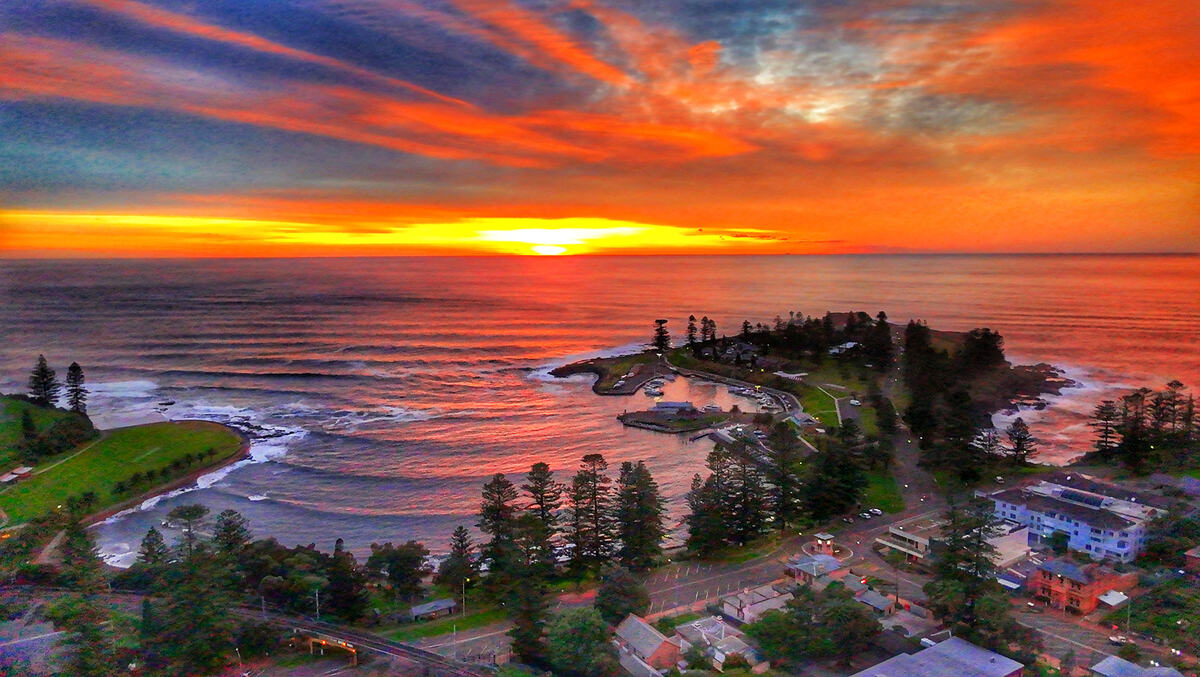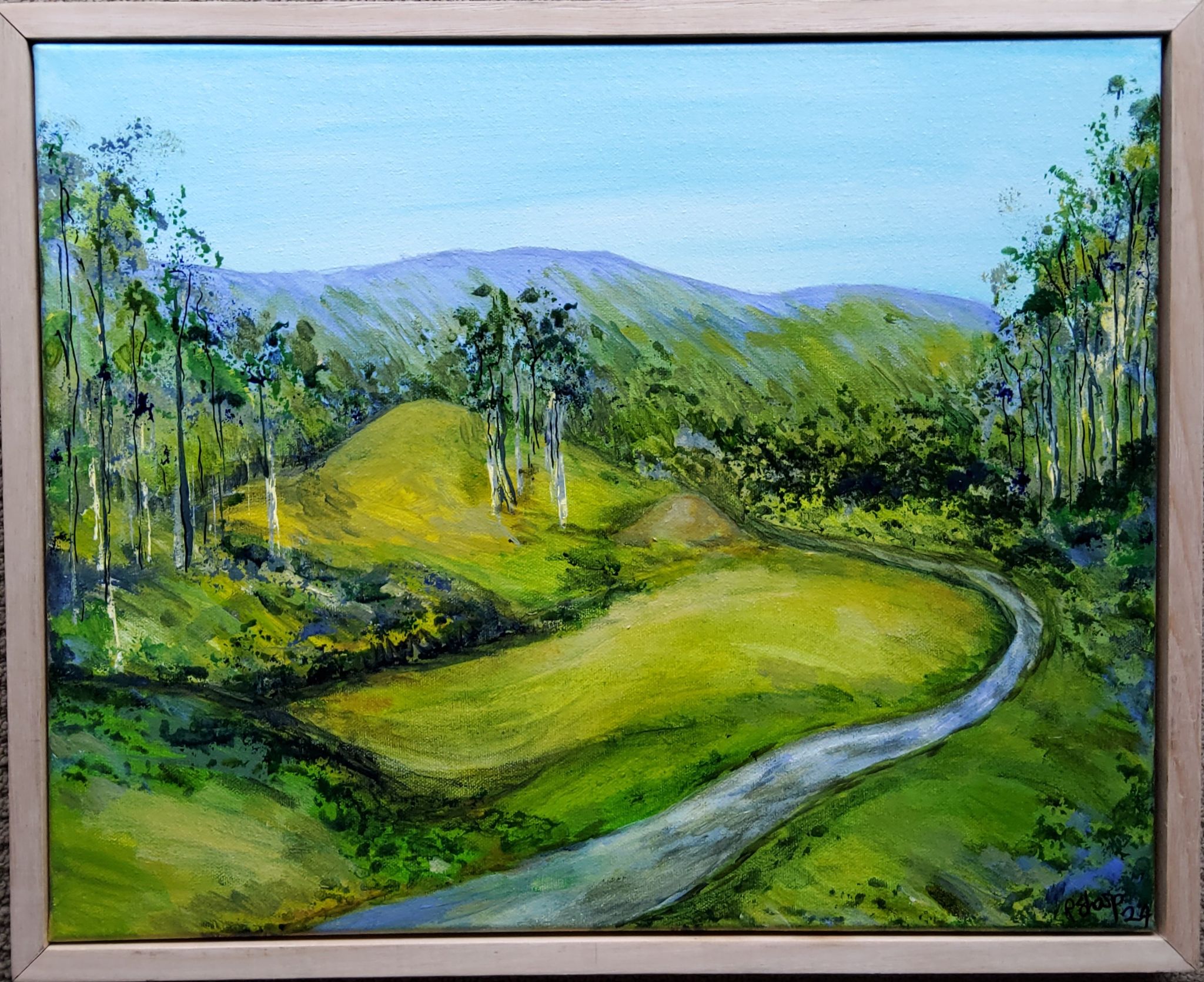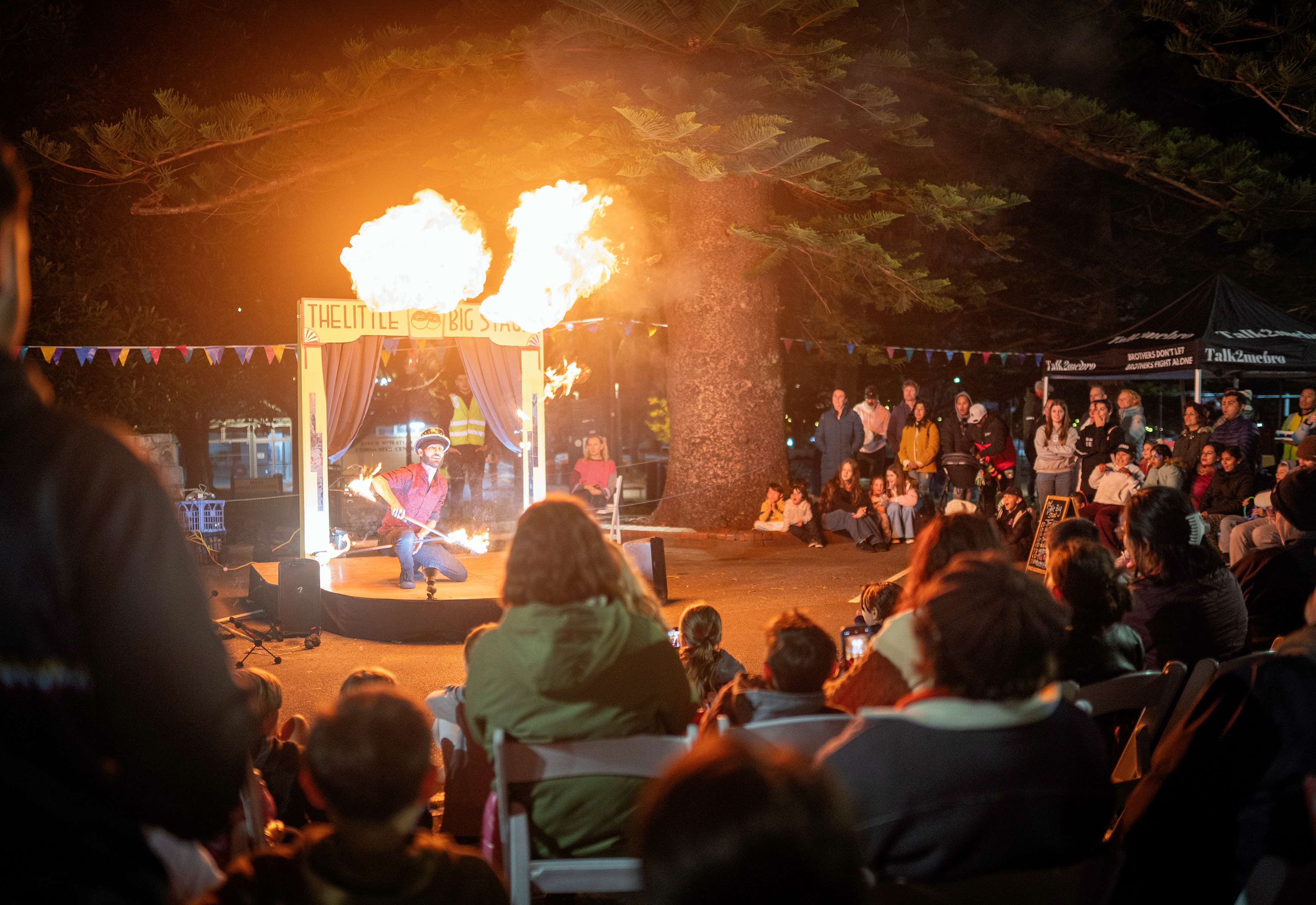Kiama photographer's quick thinking for stranded whale
Danielle Woolage
19 July 2025, 8:00 AM
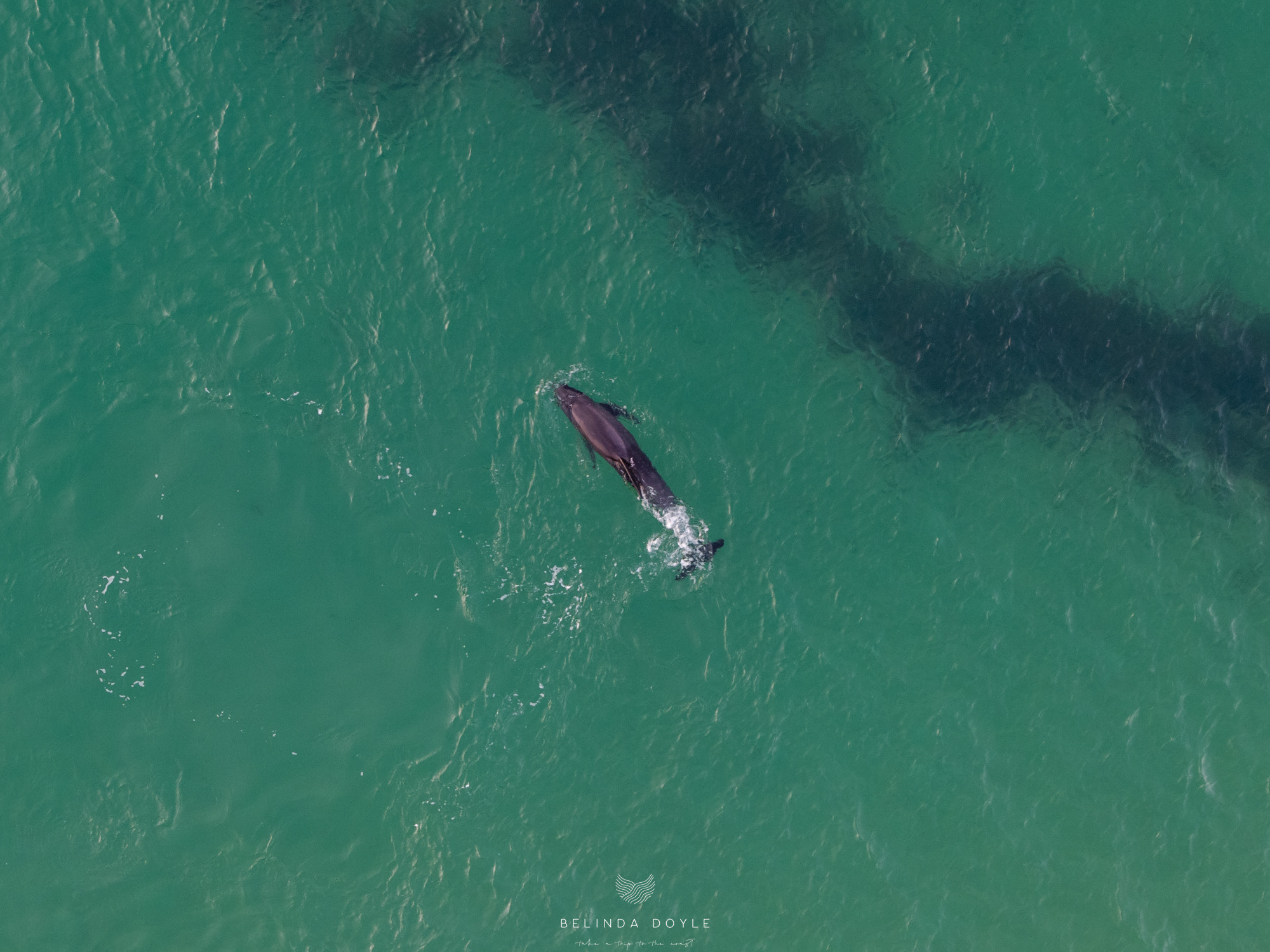 Photo: Belinda Doyle
Photo: Belinda DoyleIt was just after sunrise and the beach was deserted when Kiama photographer Belinda Doyle spotted what she thought was a dolphin thrashing in the shallows of a Wollongong beach.
Ms Doyle was at the beach with her drone and camera hoping to capture the best Mother Nature has to offer as the sun peeked over the horizon.
The Kiama local, who started her artistic journey creating resin homewares and selling them at local markets, has always dabbled in photography. It became a career almost a decade ago after customers asked to buy the coastal images she captured to promote her market stall.
For more than a decade Ms Doyle has been chasing the perfectly composed whale photograph; an in-focus shot of the mammal at play, mid-breach.
“I’m always on the lookout, especially when the migration season starts, because I don’t have that elusive whale shot yet,” says Ms Doyle. “But here’s a lot of moving parts in getting a perfect whale photo and proximity is key.
“It’s not often that they come close to shore, so you either need to be on a boat or have a really good drone to photograph them from above because you got to maintain that 100m exclusion zone from the air as well as on the water.”
Just after 6.30am on July 8 Ms Doyle was at Wollongong’s City Beach, hoping to capture a spectacular sunrise and, if the planets aligned, spot one of the 40,000 whales on their annual migration north along the humpback highway.
When the sun rose higher and the light hit the water Ms Doyle noticed “something kept breaking the surface”.
“At first I thought it was seaweed, it was only 30m offshore,” she recalls. “But after I watched it for a little while I noticed a little fin.”
She launched her drone, thinking it was a seal or dolphin frolicking close to shore, but “it was really obvious, really quickly that something was wrong”.
Ms Doyle called ORRCA, a volunteer-run whale, seal and dolphin rescue and research organisation.
“They answered straight away and I was able to send them drone video footage from my phone, along with GPS co-ordinates of the location. They assisted really quickly.”
Rescuers from ORRCA and the NPWS arrived at City Beach within half-an-hour of Ms Doyle’s phone call and identified the distressed animal as a melon-headed whale.
Despite hours of first aid by rescuers, the whale could not be saved and was humanely euthanised by veterinarians on site.
ORRCA president Ashley Ryan says it’s rare for rescuers to be able to prepare for a stranding before it occurs and attributes the quick rescue response to the actions of Ms Doyle in filming and geo-locating the mammal.
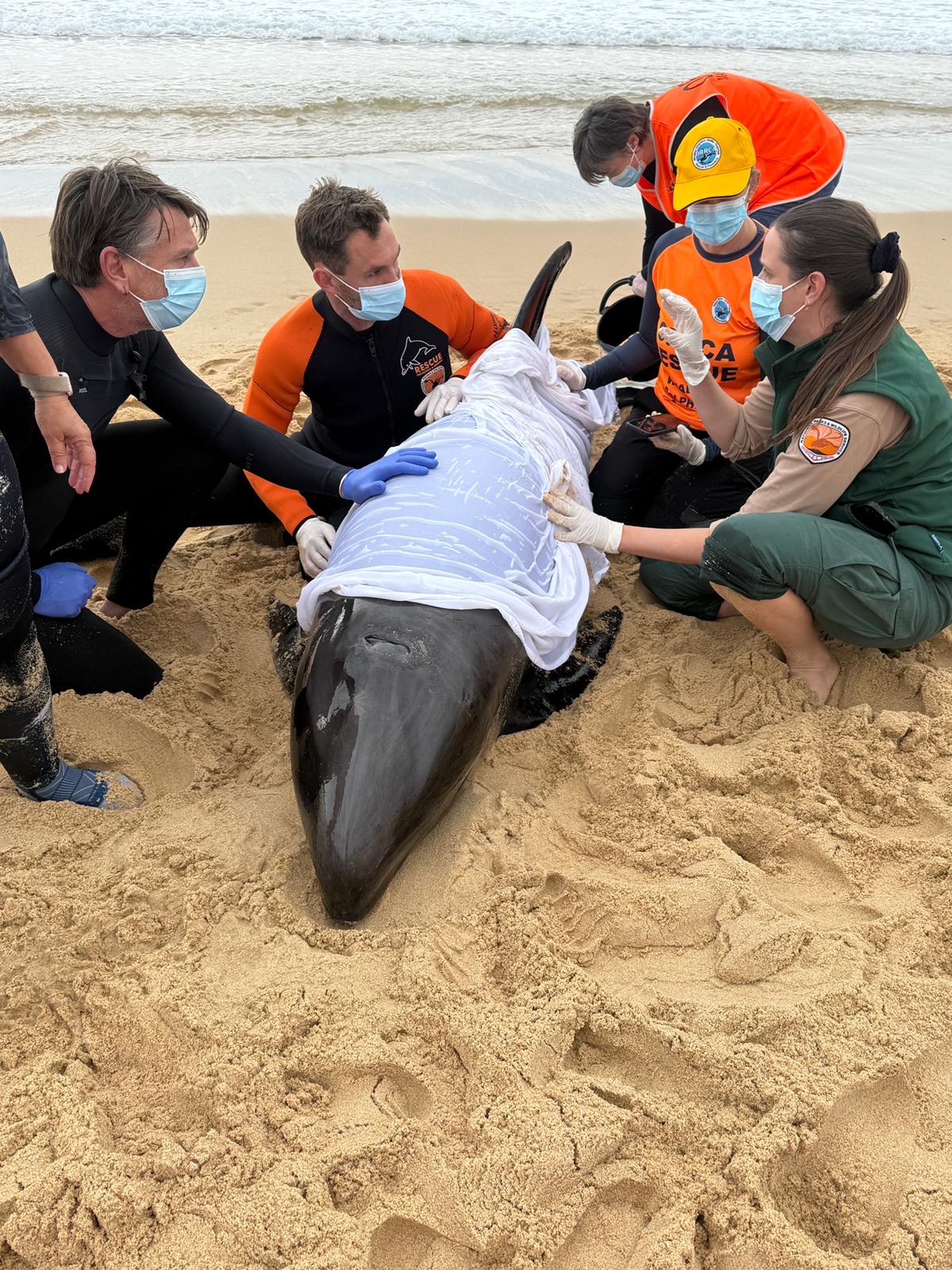
Photo: Vanessa Risku, ORRCA
“The phone call and footage meant we were able to respond really quickly to help the distressed whale, even though the outcome wasn’t what we had hoped for,” she says.
Melon-headed whales are widespread in offshore waters but are rarely spotted by onlookers, unlike their humpback reklatives where nearly 150 were spotted off Kiama Heights in a single day during June’s annual ORRCA whale census.
“This is only the second recorded stranding of a melon-headed whale in NSW this year,” says Ms Ryan. “The first was at Port Macquarie, with another stranding of three melon-headed whales in the West Australian town of Broome in January.
“Strandings can be caused by illness, injury, disorientation, or navigation errors - especially in areas with shallow, gently sloping shorelines.
“Every stranding is heartbreaking, but they’re also a vital opportunity for us to learn more.”
Ms Doyle says while the incident was distressing to watch she was grateful she able to help facilitate a quick rescue attempt.
“I’ve seen some incredible marine life in the ocean over the years, and I was really emotionally invested in this whale’s survival,” she says. “While the outcome was upsetting, I am glad I was there. There weren’t many people on the beach so they probably wouldn’t have called ORRCA unless the whale had already beached itself.

Photo: Belinda Doyle.
“It’s just lucky that I had the drone and could put it up to see what was happening from the air and then send through the footage to ORRCA so the whale could be assessed sooner rather than later so it didn’t suffer for longer.”
While it wasn’t the type of whale encounter Ms Doyle had hoped for the photographer was heartened by the community and volunteer response to the attempted rescue.
“The ORRCA volunteers were amazing,” she says.
The rescue organisation’s hotline operates year-round, 24/7 and anyone who spots a whale, dolphin, dugong or seal emergency is asked to remain a safe distance from the mammal and report the incident on (02) 9415 3333.
NEWS
